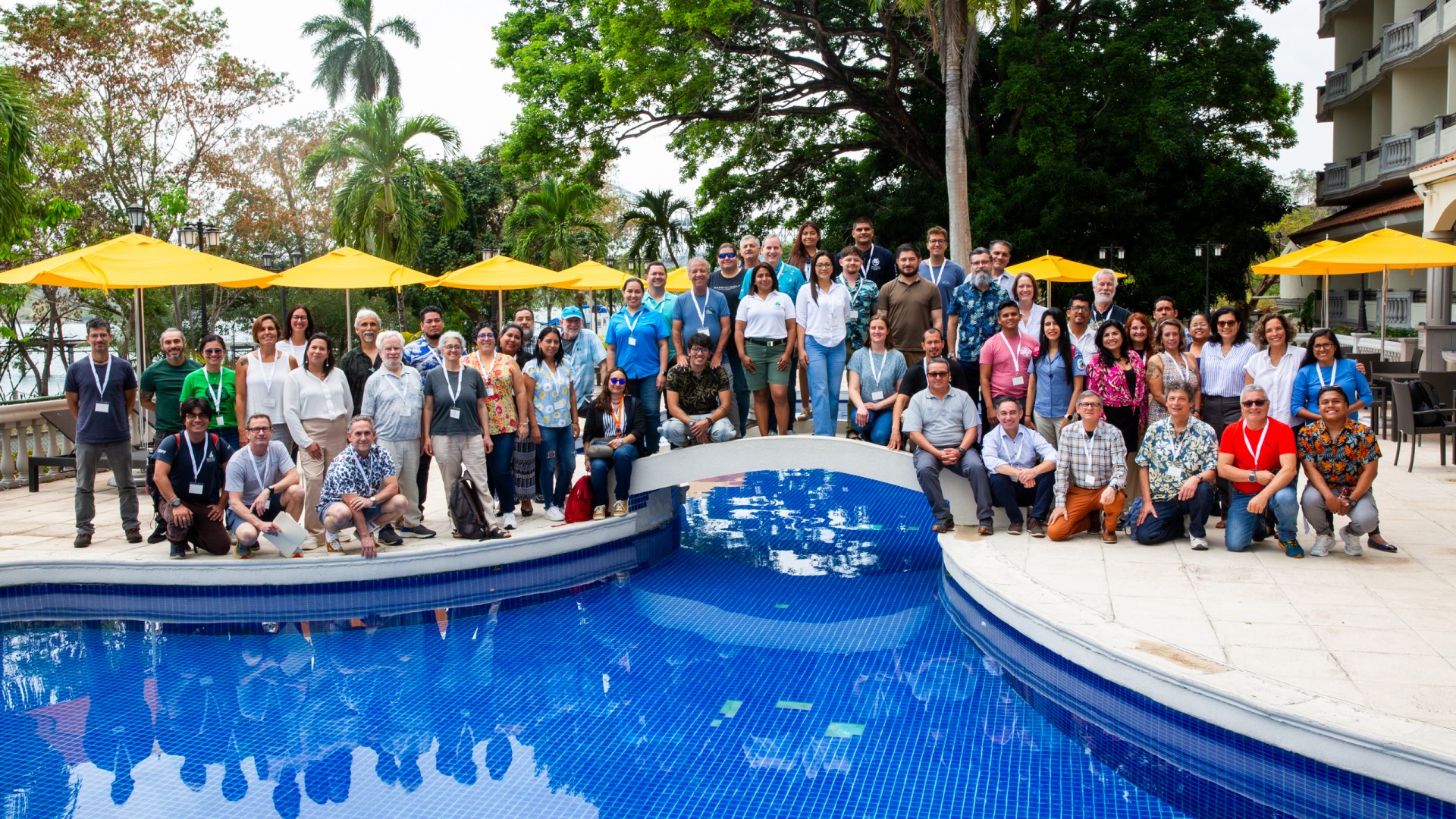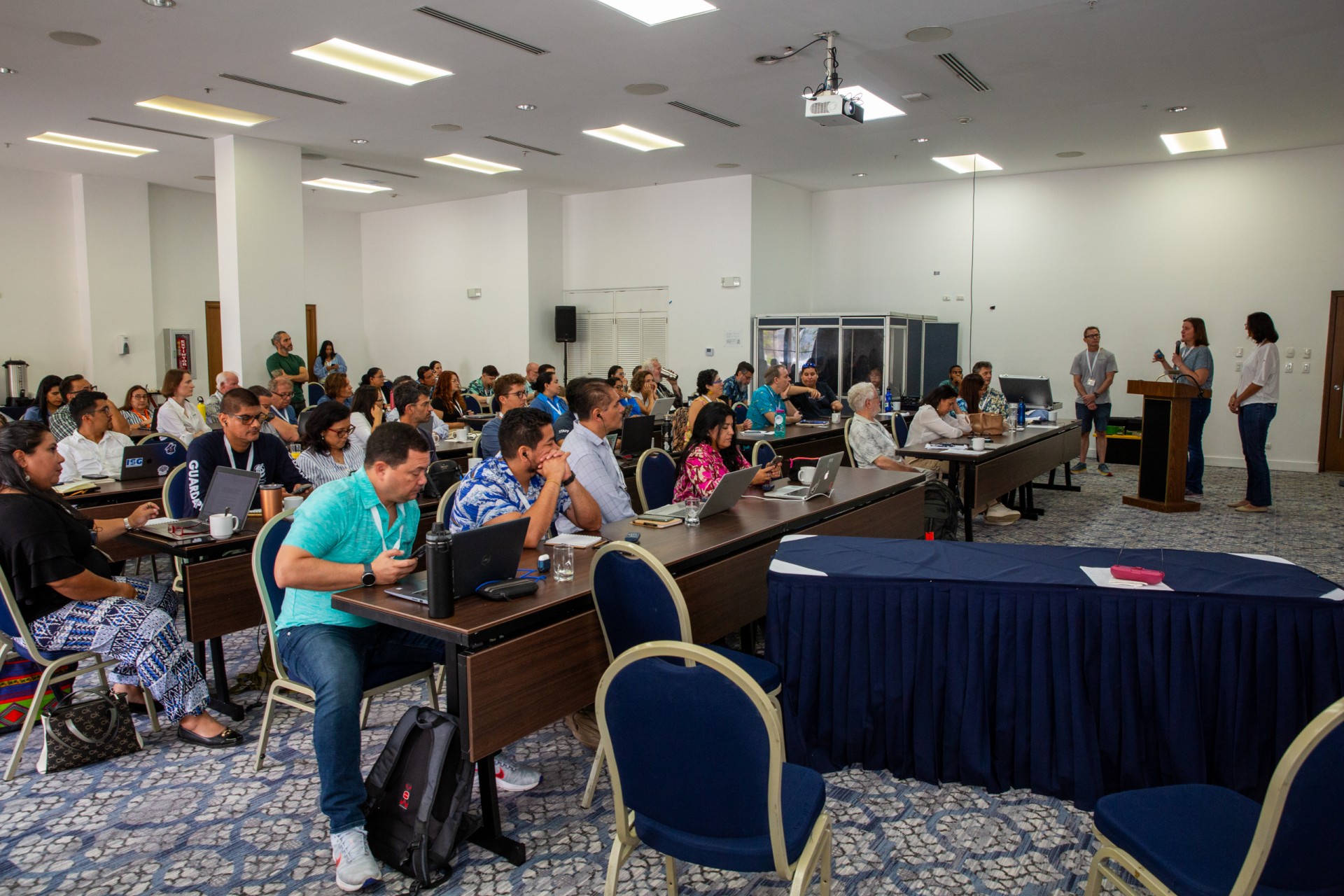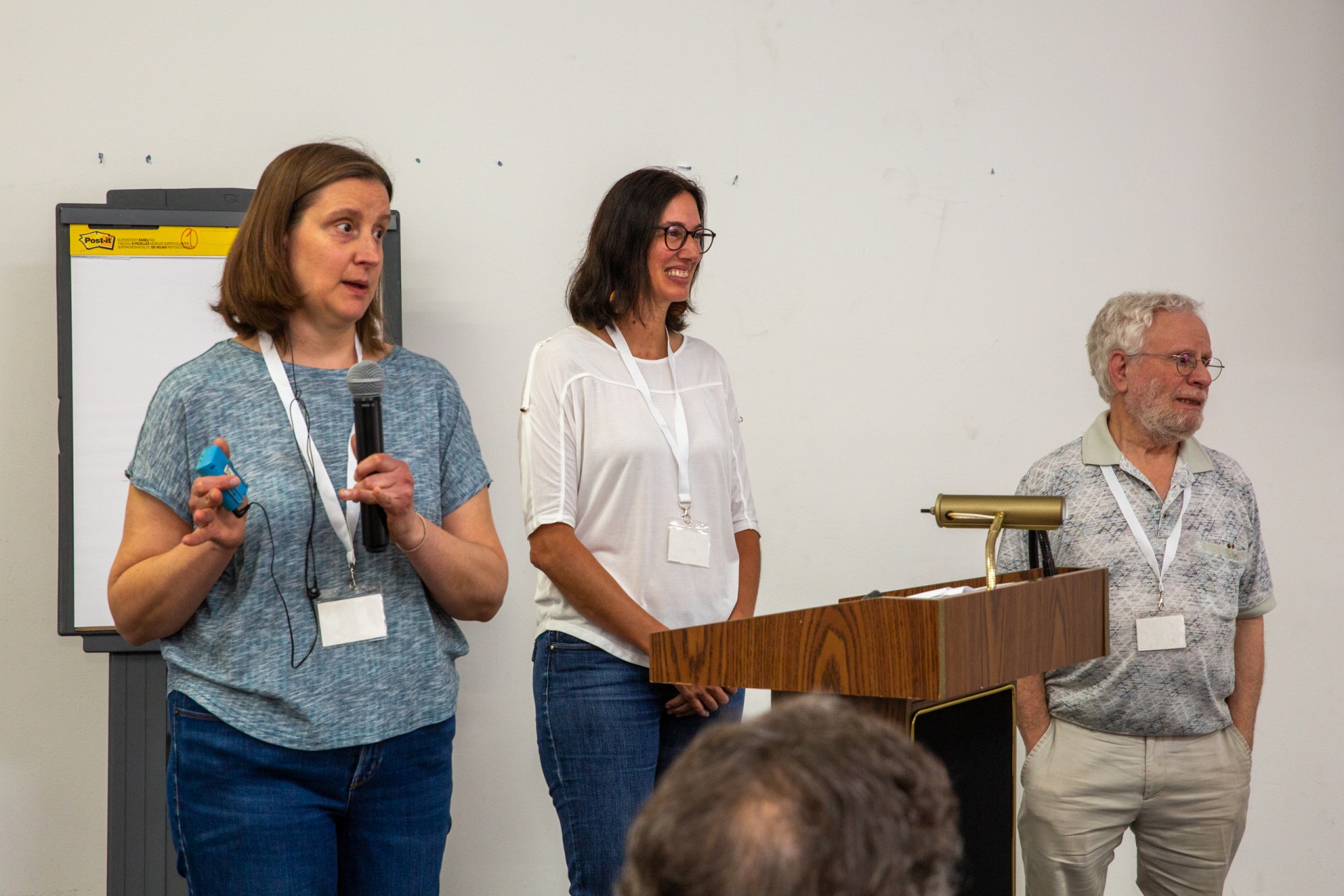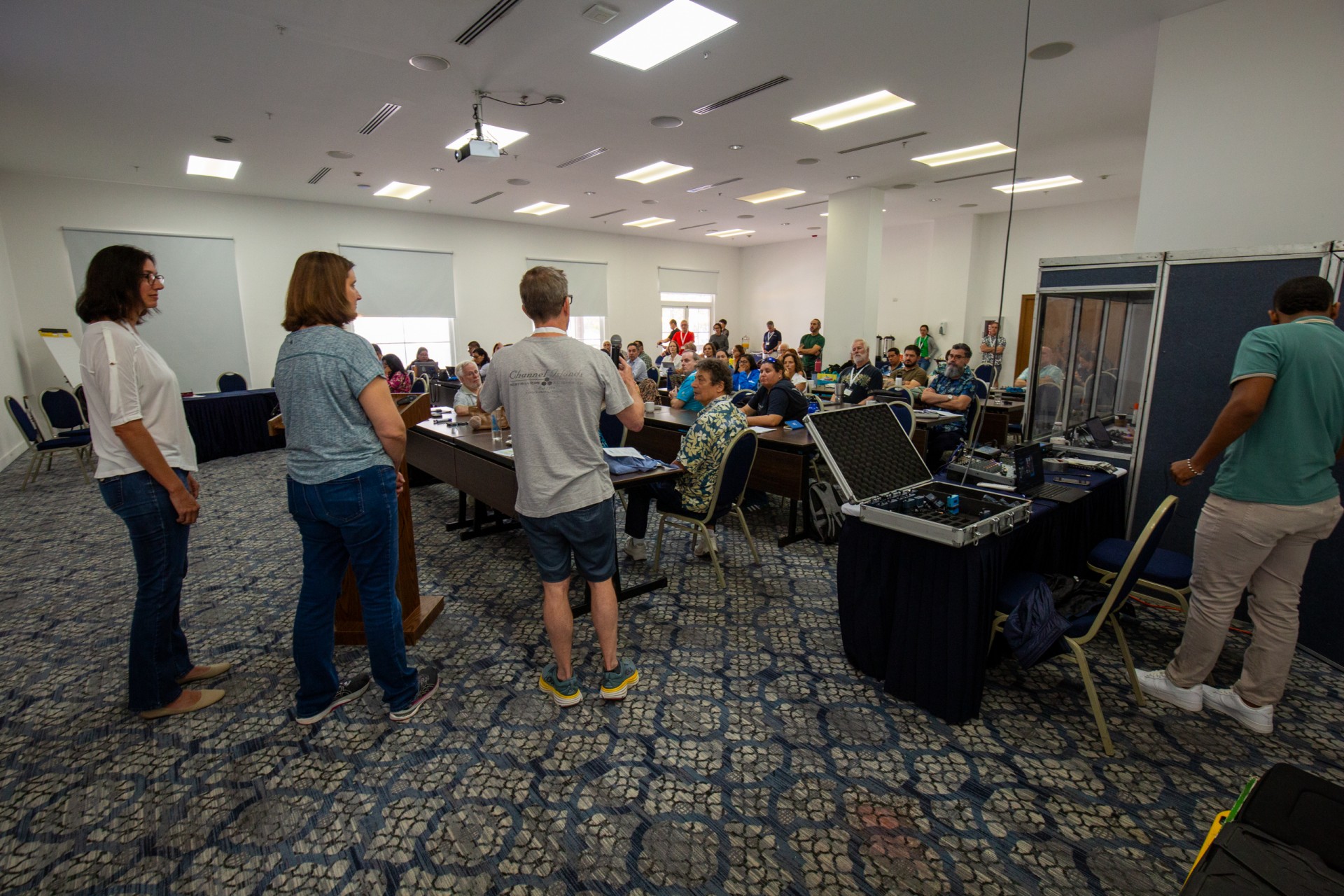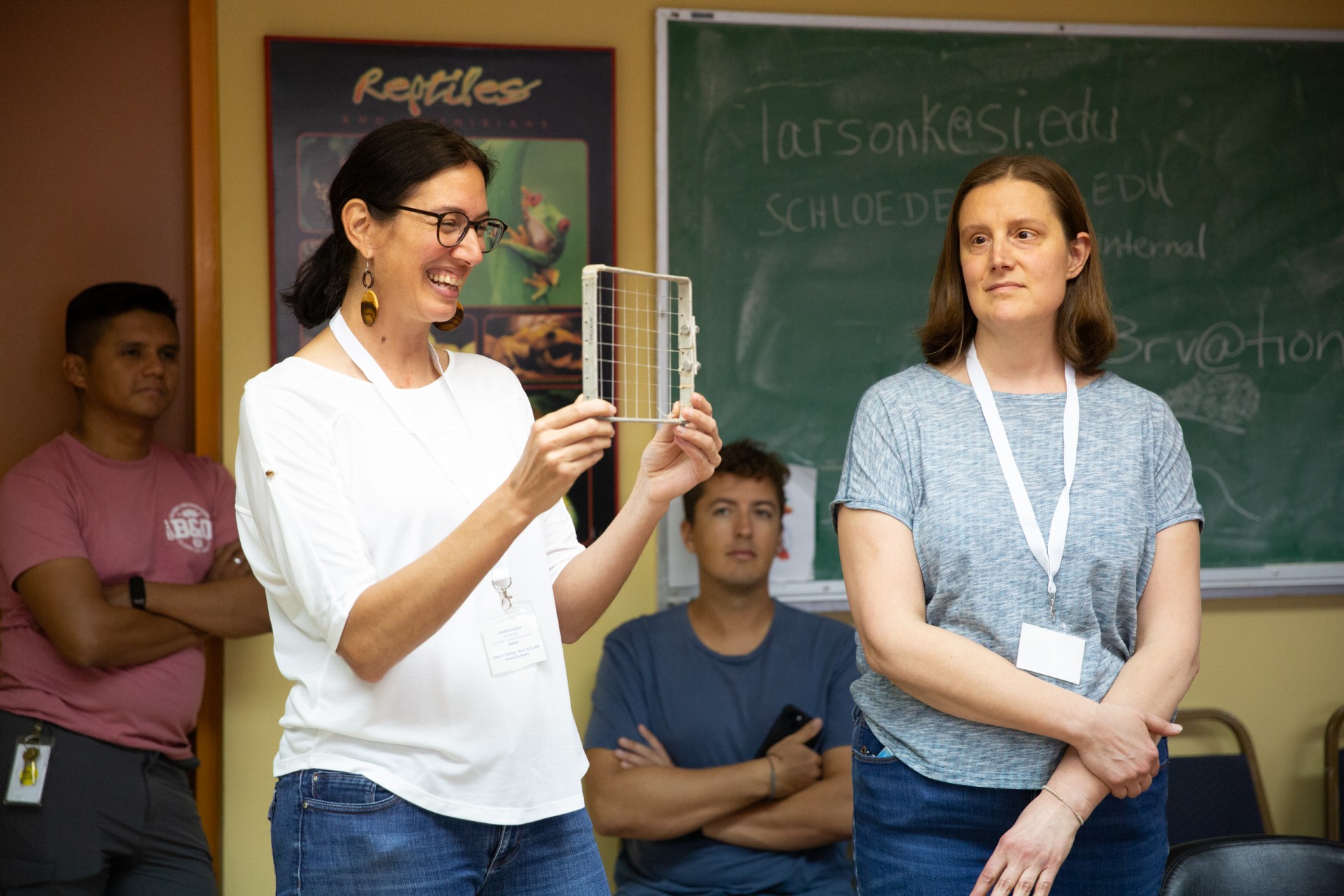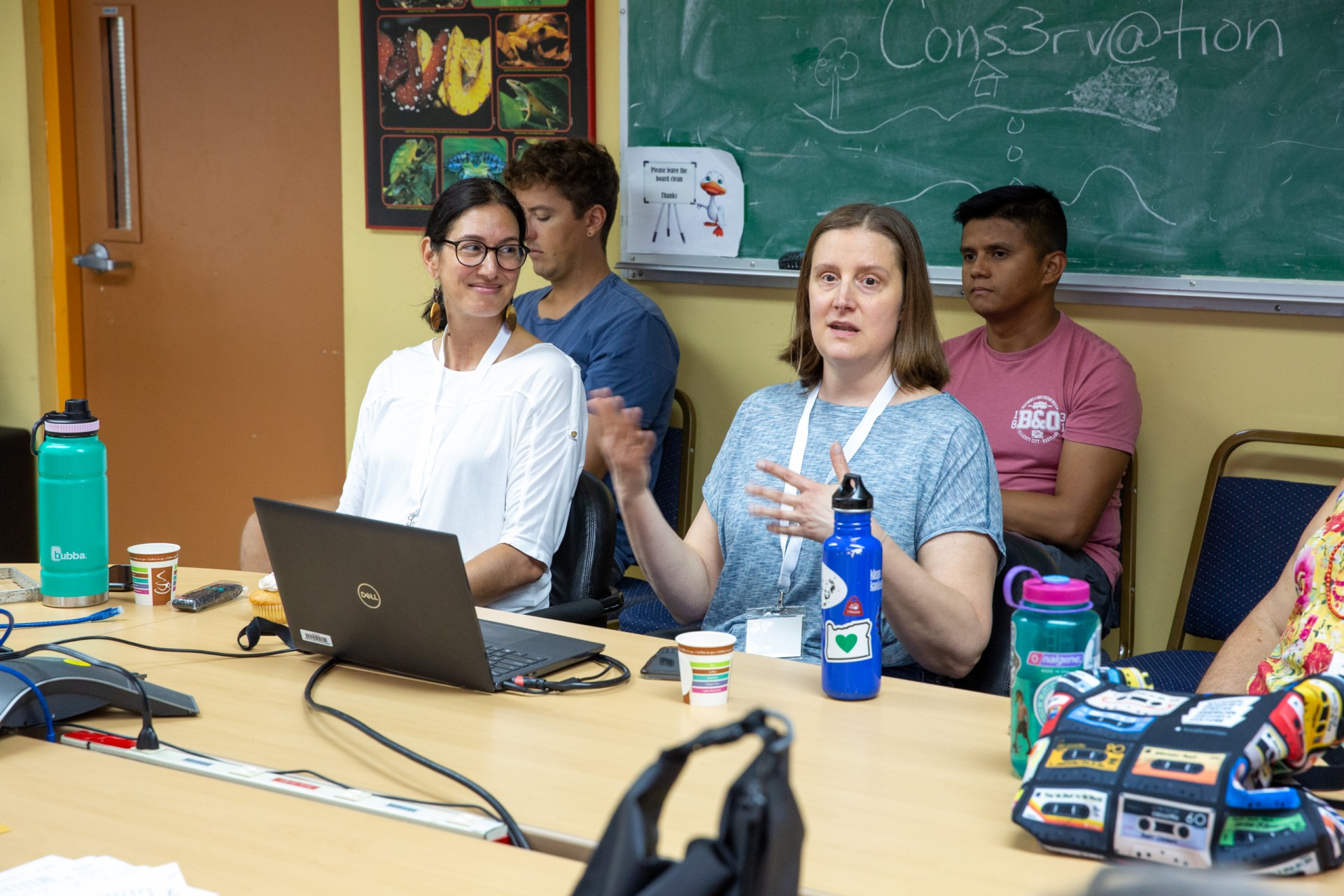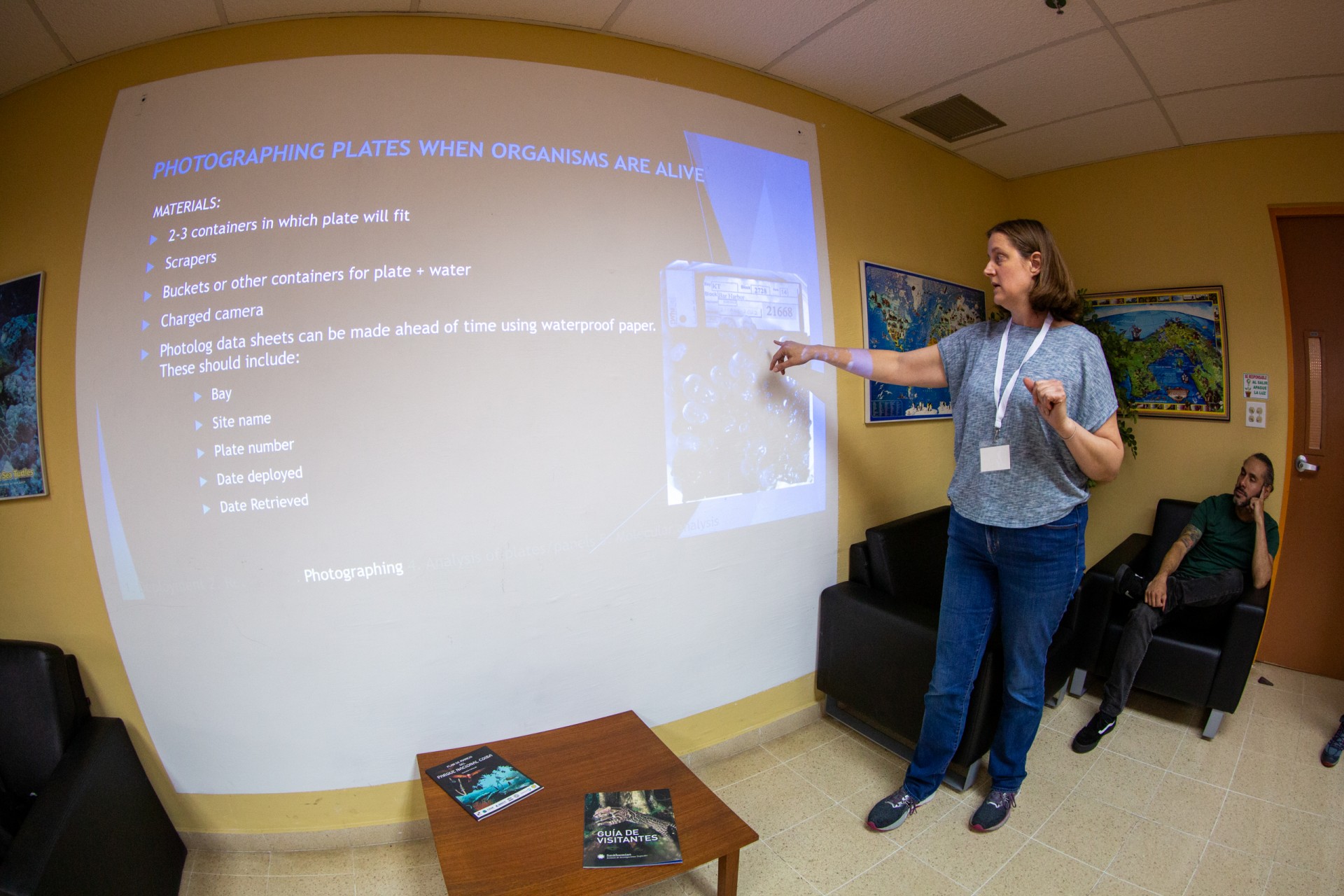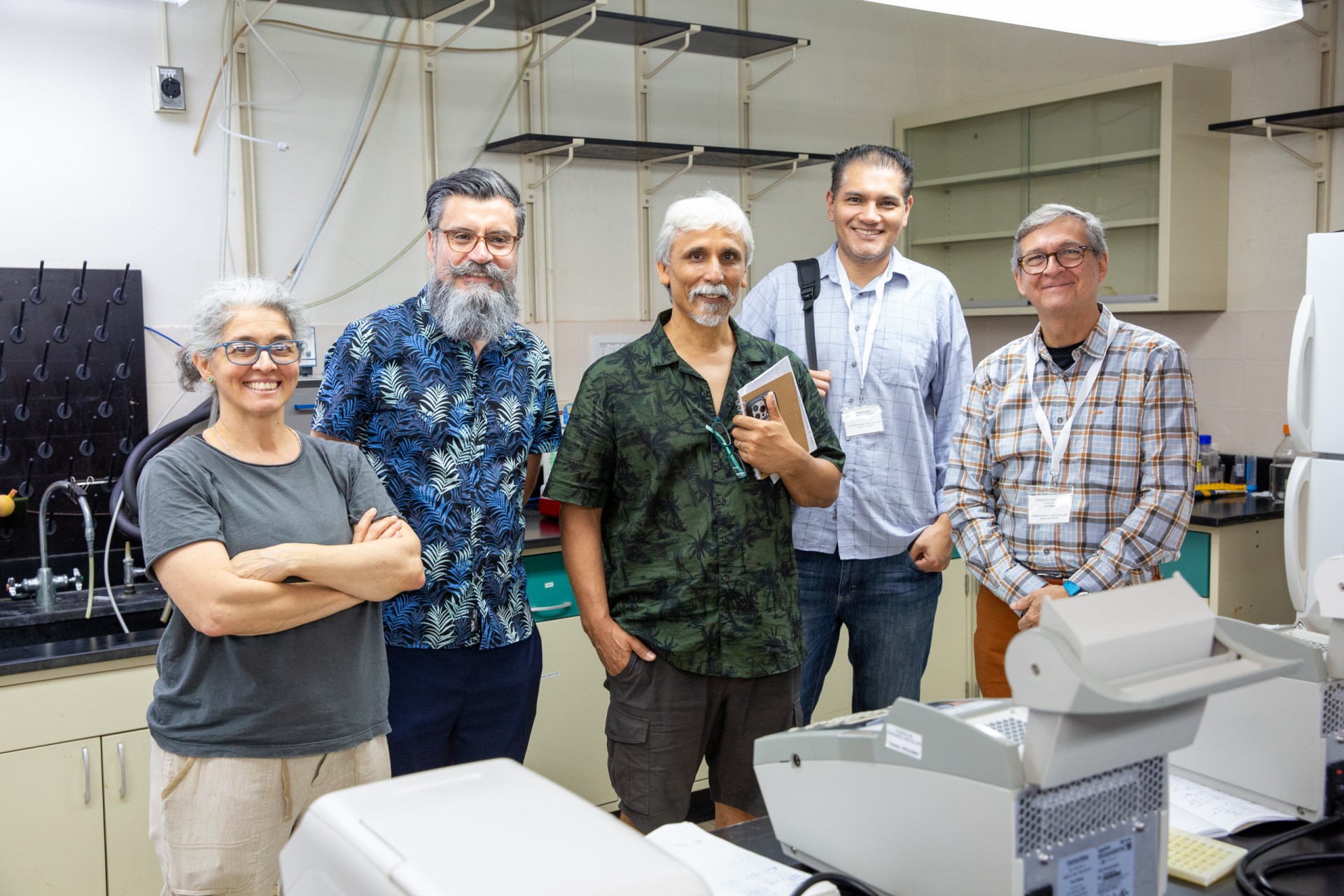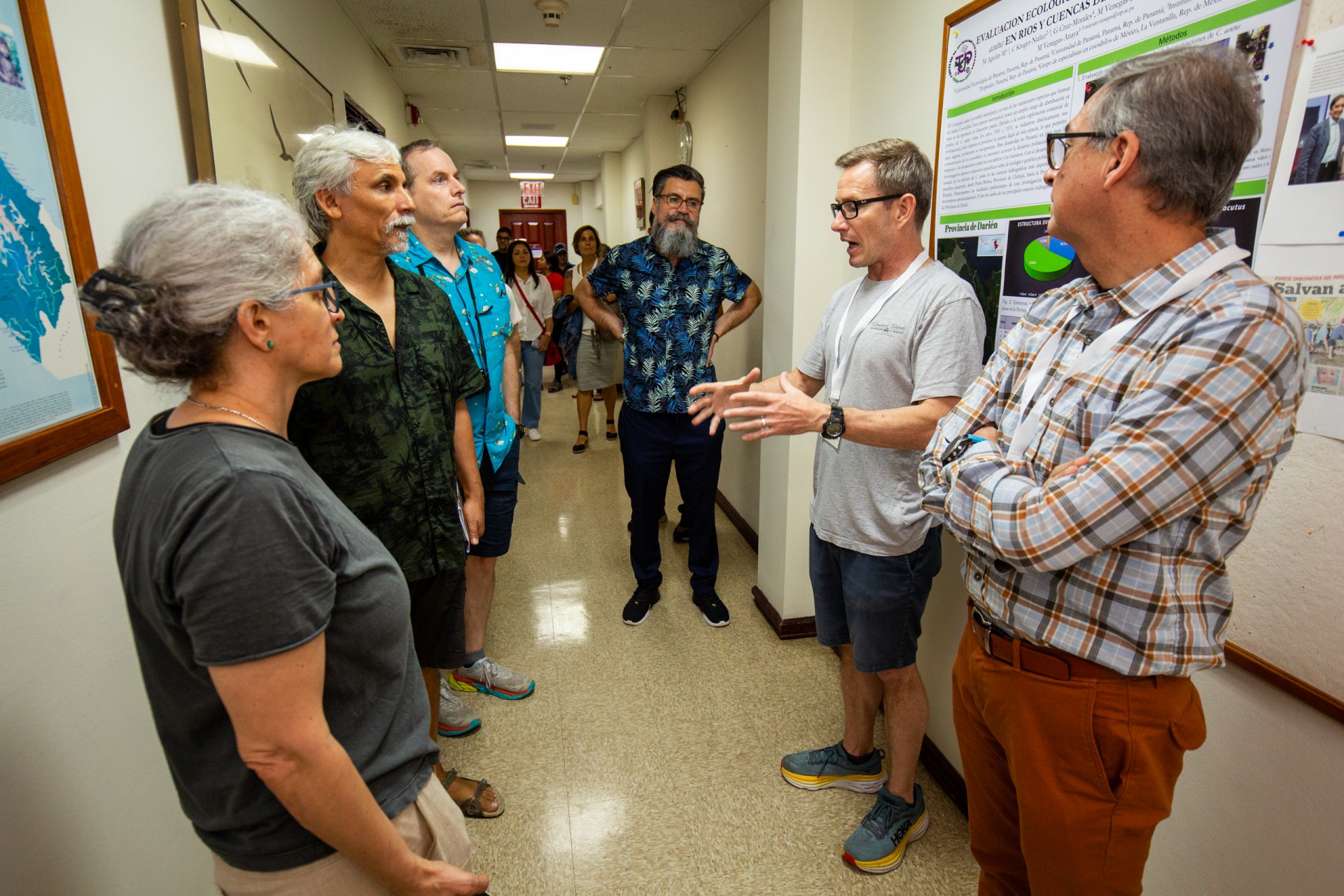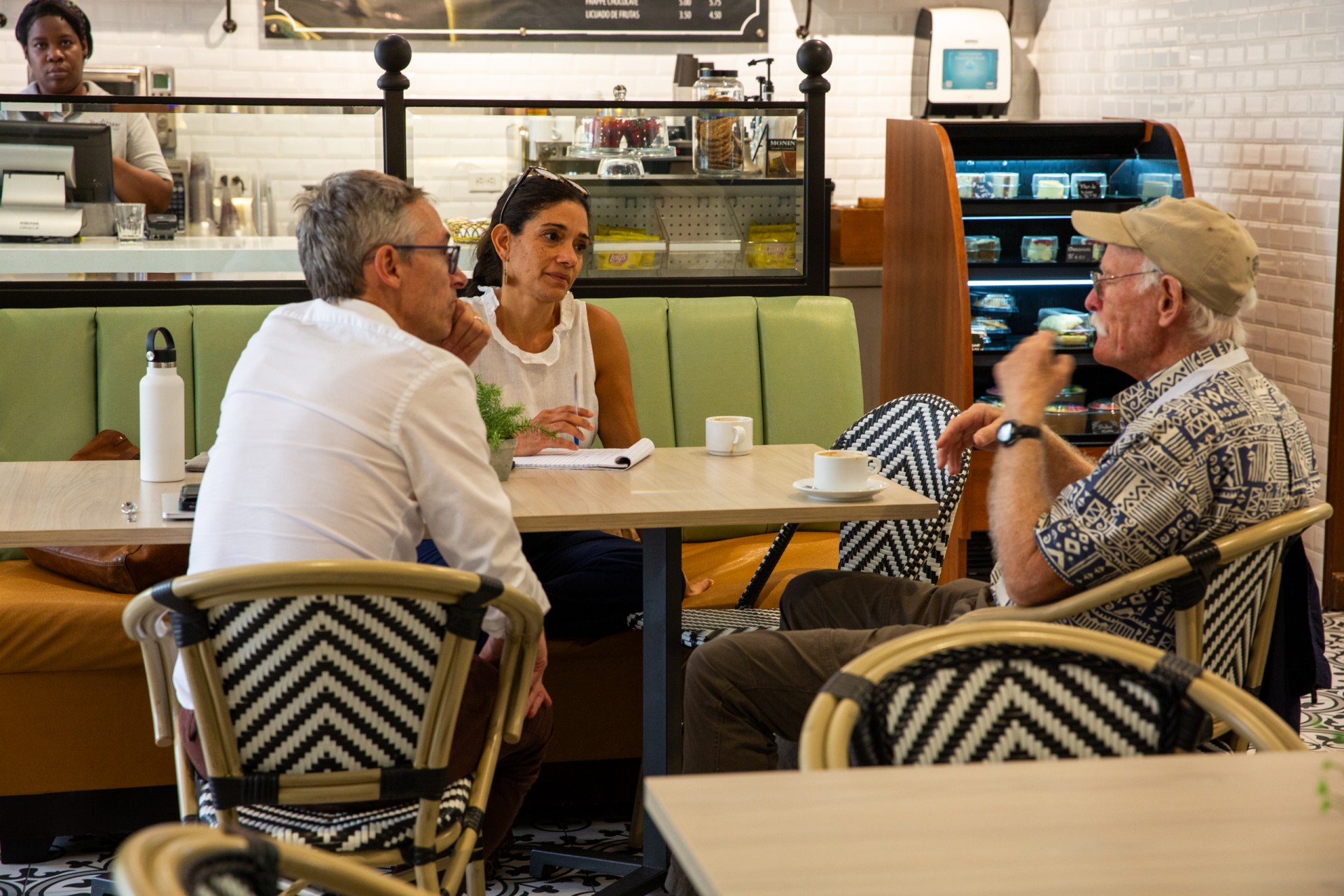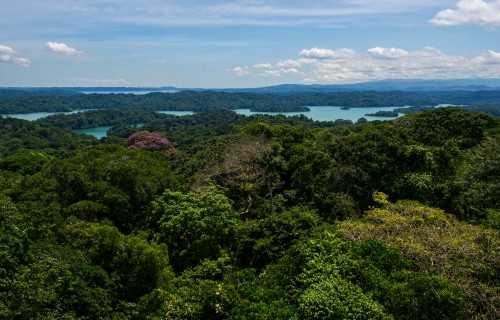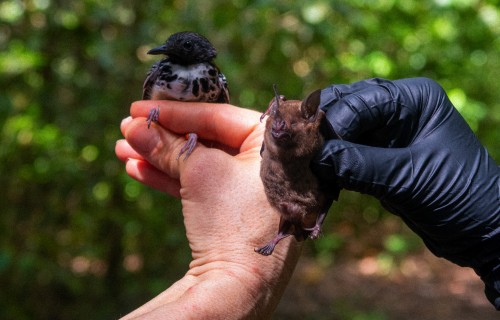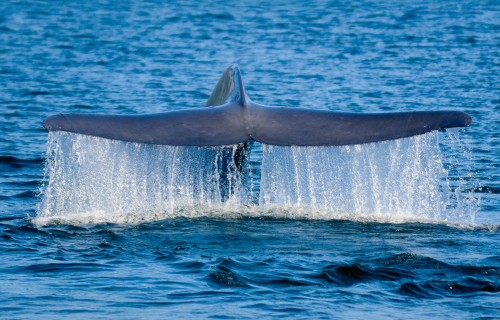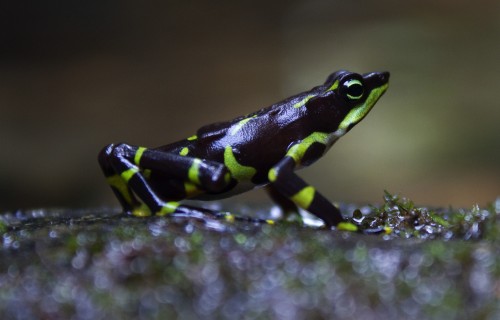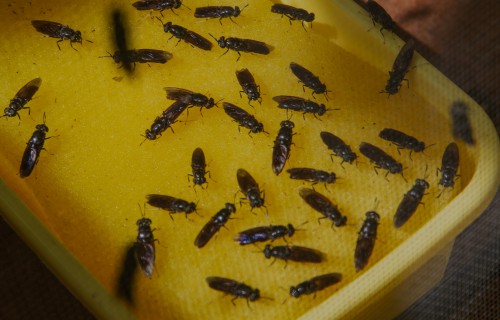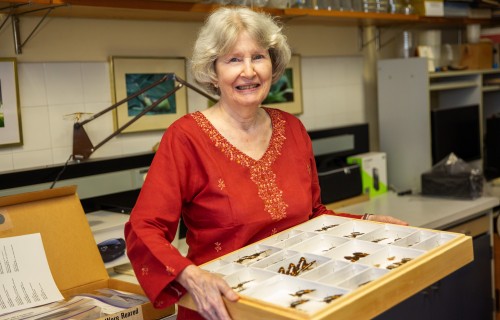Smithsonian science helps understand blue whale migratory and foraging patterns to inform conservation strategies
COMBINA
Teaming up to combat invasive marine species in the Tropical Eastern Pacific
Story by Leila Nilipour
Panama
A workshop in Panama City brought together scientists, policymakers, environmental managers and port officials from across the Americas to coordinate efforts in marine biosecurity.
In late March, a Neopanamax container ship collided with the Francis Scott Key Bridge in Baltimore, Maryland, resulting in the bridge's collapse. Before the accident, the vessel had crossed the Panama Canal, like thousands of commercial ships do annually. Alongside their cargo, these large ships traveling across oceans inadvertently host marine life hitchhikers within their ballast water or attached to their hulls. This has facilitated the introduction of species from distant regions into new ecosystems. Some of them thrive in their newfound waters, displacing native species and disrupting the habitat's natural balance. To marine scientists, these intruders are known as invasive species.
A few days before the ship collision in Baltimore, scientists, policymakers, port officials and environmental managers from all over the Americas gathered in Panama City, right by the Panama Canal, for the COMBINA workshop: “Addressing and Coordinating Marine Biosecurity Across the Americas”.
The four-day event facilitated the exchange of data, training protocols, and perspectives on preventing and managing marine invasions across the Tropical Eastern Pacific and fostered connections across the continent. In our increasingly interconnected, climate-changing world, invasive species pose a growing threat to our oceans, so working as a network is more critical than ever.
“Working on invasions it becomes clear that it is not a local challenge, but a regional, global issue,” said Mark Torchin, a staff scientist at the Smithsonian Tropical Research Institute in Panama (STRI), whose lab focuses on marine invasions. “Species are moving around the world and the actions of one country inevitably impact others.”
Researchers from the Smithsonian Environmental Research Center (SERC) in the United States, STRI in Panama, and the Charles Darwin Foundation in Galapagos, Ecuador have been investigating marine invasions for decades. They track their arrival in ports or marinas and their eventual expansion towards reefs or island ecosystems.
In 2019, a group of these scientists organized the first regional workshop on invasive species in the Galapagos as a first step toward building a network. Despite facing a sudden halt due to the pandemic, during the Our Ocean Conference in Panama in 2023, the collaborative initiative re-gained momentum with the formal launch of COMBINA – Coastal Ocean Marine Biosecurity: International Network of the Americas.
Its first official COMBINA workshop in Panama in March 2024 was a success, with over 70 participants from 12 countries on both continents. Among the local workshop participants were employees from the Panama Canal Authority, Panama’s Ministry of the Environment, Panama’s Maritime Authority and Beatriz Medina, dean of the School of Marine Sciences at the Maritime International University of Panama (UMIP).
“I’m participating in this workshop because I want to keep doing research related to invasive species and how they affect ecosystems and the commercial species that we have in Panama,” said Medina. “We have extensive coastlines along the Pacific and the Caribbean, so fostering relationships with the international community dedicated to these issues is key, because it enables us to stay informed and updated on the latest developments in the field.”
Partnering with the UMIP and training its students is critical to Torchin. These are the future scientists or civil servants in government institutions dealing with marine invasions in Panama.
“Panama is the largest flag nation for vessels worldwide and two oceans are at its backbone,” said Torchin. “It is important to weave biosecurity into its marine defenses by developing local capacities for surveys and early detection.”
More importantly, countries across the region must adopt standardized protocols and methodologies for data collection and analysis. This would facilitate much-needed information sharing to evaluate biological invasions on a broader scale and coordinate efforts to address their timely prevention, detection and response. The COMBINA workshop served as the ideal platform for countries to advance in that direction.
"I loved the levels of commitment from so many different countries, from government representatives to environmental managers,” said Inti Keith, a principal investigator at the Charles Darwin Foundation and the science group coordinator of the Eastern Tropical Pacific Marine Corridor Initiative (CMAR). “In these workshops scientists get really excited but here everyone was very interested.”
COMBINA concluded with plans in place for the next few years. Among them are organizing yearly meetings—alternating between virtual and in-person—and involving Caribbean nations in upcoming engagements, given their regional connectivity. Ultimately, maintaining interest and participation in the network translates into a need for ongoing funding to facilitate the organization of meetings and the dissemination of materials and protocols.
“Invasions by non-native species are a major force of global change and biodiversity loss, as recognized by the Convention on Biological Diversity, and no place on Earth is immune to invasions” said Gregory Ruiz, a senior scientist at the Smithsonian Environmental Research Center.
As global trade and the consequences of climate change continue to increase, more introduced species can establish themselves in new environments, intensifying the urgency for collective and effective biosecurity measures.
A key biosecurity measure also includes supporting resilient ecosystems, where native predators can fulfill their role in controlling invasive species. From a human impact perspective, this boils down to preventing the overexploitation of predators.
“Once we can figure out how our actions are shaping habitats and how that impact is felt across highly interconnected ecosystems, we can be in a better place to inform policy, leading with science, to protect our oceans,” said Torchin.
Funding for the COMBINA workshop “Addressing and Coordinating Marine Biosecurity Across the Americas” was provided by STRI, the Adrienne Arsht Community Based Resilience Solutions Initiative, the Smithsonian Environmental Research Center, the Charles Darwin Foundation, Jacotoco Foundation, Re:Wild, and the United States Coast Guard. The COMBINA organizing committee co-chairs included Gregory Ruiz, Inti Keith, Mark Torchin and James T. Carlton.
Headquartered in Panama, the Smithsonian Tropical Research Institute is a unit of the Smithsonian Institution in Washington, DC. The institute furthers the understanding of tropical biodiversity and its importance to human welfare, trains students to conduct research in the tropics and promotes conservation by increasing public awareness of the beauty and importance of tropical ecosystems.

